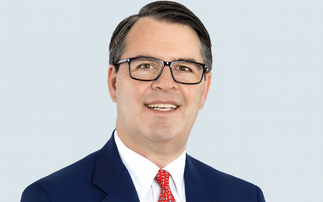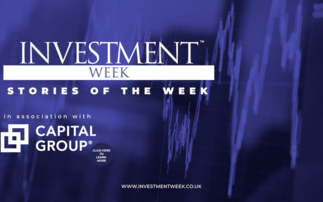
ETFs have become one of the defining innovations in global investing. Launched in the 1990s as low-cost ways to track indices, they are now a mainstay for institutions and individuals alike. Their transparency, liquidity, and efficiency have set a new standard for accessing markets.
But ETFs are simply a structure. While the first were entirely passive, today's market is evolving quickly. Actively managed ETFs combine the same listed format with deliberate investment decisions—whether through portfolio managers or systematic models—designed to capture returns and manage risk more effectively. For you, that means efficiency plus insight, at a time when portfolios must navigate volatility and concentration.
Clearing up the misconceptions
A common misconception is that ETFs equal passive investing. Not true. An ETF is just the format. In an active ETF, the strategy is driven by research and active choices, with the aim of generating alpha or managing risk more precisely.
Liquidity is another point often misunderstood. Smaller ETFs can look thinly traded, but real liquidity comes from the underlying securities. Market makers create and redeem ETF shares to meet demand, keeping active ETFs as liquid as the assets they hold.
Momentum in Europe
The US led ETF innovation, but Europe is catching up fast. Allocations to active ETFs have surged in recent years—from about a fifth of ETF investors to roughly half today. That shift reflects regulatory support, institutional appetite for cost-effective active exposure, and broader adoption among distributors and advisers.
For you, this means active ETFs are no longer niche. They're a growing part of the European fund landscape.
Managing risk where it matters
With megacaps like the Magnificent Seven dominating indices, concentration is a real challenge. Passive exposure leaves you fully tied to those names.
Active ETFs give you options: broaden diversification, tilt toward proven factors, or build in sustainability criteria. The goal is resilience, not replication. For allocators, this flexibility is increasingly valuable.
Performance and cost
Can active strategies outperform after fees? Many do. Active ETFs keep costs competitive while making it clear what you pay for: the research and intellectual capital behind the strategy.
Systematic approaches, in particular, are designed to keep turnover and trading costs low, while targeting established sources of excess return. The result: a competitive total cost of ownership and strategies that have proven their ability to deliver net alpha across cycles.
A tool you can use flexibly
Because ETFs trade intraday, they're often seen as tactical tools. But they're versatile. Active ETFs can serve as core positions, satellite exposures, or tactical allocations. You choose how they fit.
Looking ahead
The rise of active ETFs is about more than product innovation. It shows that investors like you want both efficiency and insight: liquidity and transparency on one side, active decision-making on the other.
As markets grow more complex and cycles shorten, that dual capability will only matter more. Active ETFs offer a way to capture the discipline of active management while keeping the operational advantages that made ETFs popular in the first place.
At Robeco, active ETFs are a natural extension of our 25-year track record in systematic investing. By embedding proven, research-driven strategies into the ETF format, we aim to deliver transparent, scalable solutions that help you meet your goals with confidence.
The next chapter in ETFs is already underway—and active ETFs give you a direct way to be part of it.
Disclaimer
Important information - capital at risk
This information refers only to general information about Robeco Holding B.V. and/or its related, affiliated and subsidiary companies ("Robeco"), Robeco's approach, strategies and capabilities. This is a marketing communication intended solely for professional investors, defined as investors qualifying as professional clients, who have requested to be treated as professional clients or who are authorized to receive such information under any applicable laws. Unless otherwise stated, the data and information reported is sourced from Robeco, is, to the best knowledge of Robeco, accurate at the time of publication and comes without any warranties of any kind. Any opinion expressed is solely Robeco's opinion, it is not a factual statement, and is subject to change, and in no way constitutes investment advice. This document is intended only to provide an overview of Robeco's approach and strategies. It is not a substitute for a prospectus or any other legal document concerning any specific financial instrument. The data, information, and opinions contained herein do not constitute and, under no circumstances, may be construed as an offer or an invitation or a recommendation to make investments or divestments or a solicitation to buy, sell, or subscribe for financial instruments or as financial, legal, tax, or investment research advice or as an invitation or to make any other use of it. All rights relating to the information in this document are and will remain the property of Robeco. This material may not be copied or used with the public. No part of this document may be reproduced, or published in any form or by any means without Robeco's prior written permission. This information is provided by Robeco Institutional Asset Management UK Limited, 30 Fenchurch Street, Part Level 8, London EC3M 3BD, registered in England no. 15362605. Robeco Institutional Asset Management UK Limited is authorised and regulated by the Financial Conduct Authority (FCA – Reference No: 1007814).












